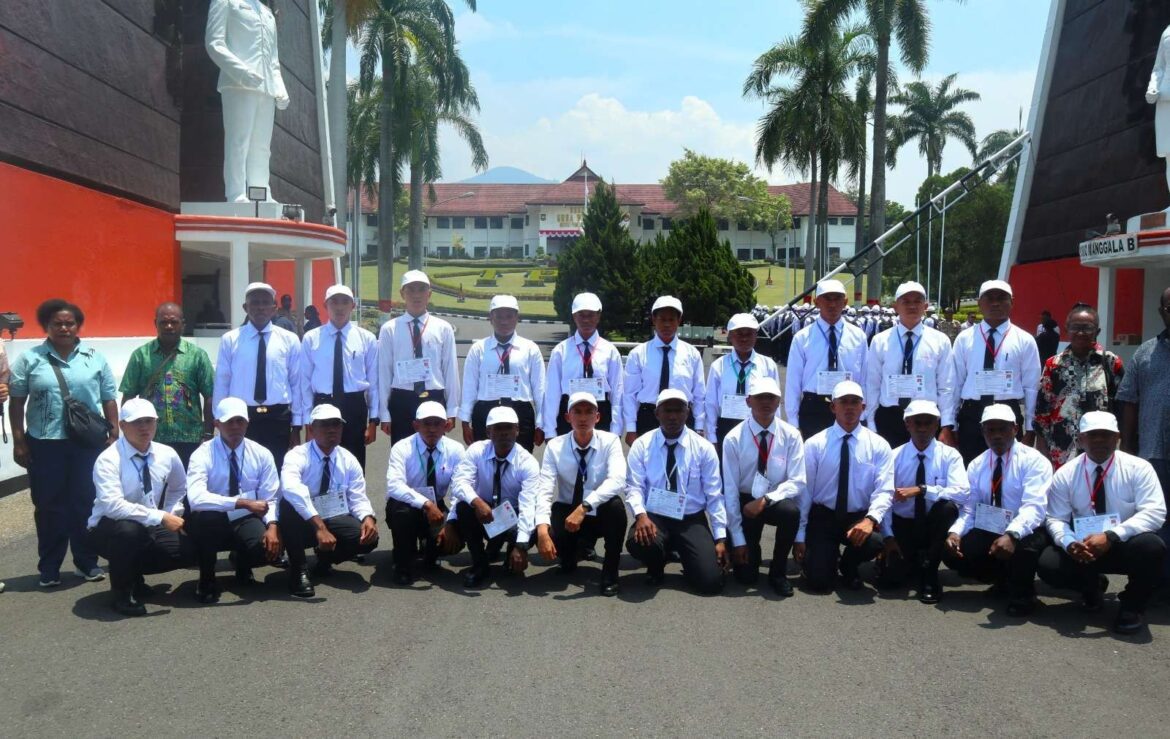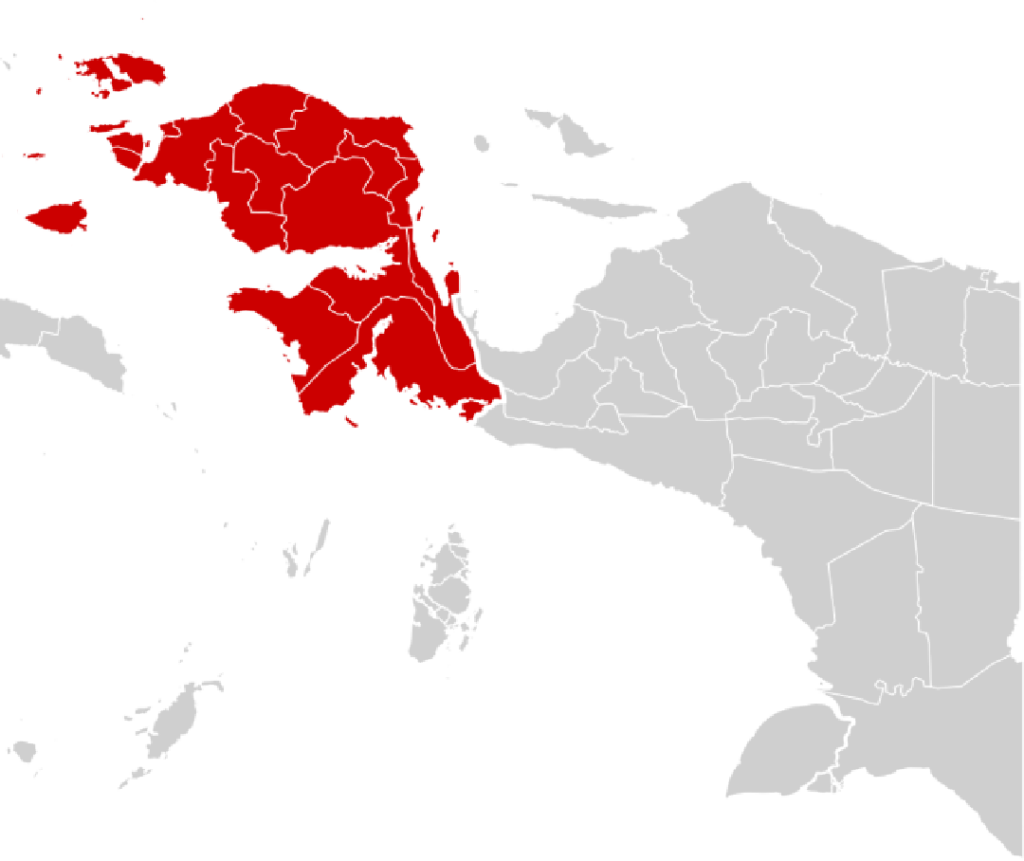In the quiet hum of early September mornings across Central Papua’s highlands, families gathered to say goodbye—not to mourn, but to celebrate. A total of 16 sons and daughters of the indigenous people of Papua (OAP)—along with six of their peers (non-OAP)—began their journey to Jatinangor, West Java, to enter one of Indonesia’s most prestigious institutions: the Institute of Homeland Government (IPDN), Indonesia’s civil service institute training future government administrators. These 22 young people from Papua Tengah (Central Papua) Province now represent more than academic success; they symbolize a hope for more inclusive governance and indigenous participation in the Indonesian civil service, especially in Papua Tengah, which remains limited, uneven, and often poorly managed. The road to Jatinangor is not just a geographic journey—it is a historic one. For decades, indigenous Papuan youth have struggled for proportional representation in the administrative machinery of the state. This year’s cohort, particularly the 16 confirmed OAP students, represents a small but meaningful step in realizing long-standing aspirations for equal opportunity and national recognition.
A Competitive Path, A Personal Victory
Securing admission into IPDN is no small feat. In 2025 alone, 311 young people from Central Papua applied to the program. Out of these, only 22 made it, and among them, 16 were confirmed as OAP—having passed not just a rigorous selection process but also formal identity verification as indigenous Papuans.
For Yahya Wonda, one of the successful applicants from Puncak Jaya, the journey was long and filled with uncertainty. “I tried for three years,” he said. “This year, God finally answered my prayers.” His gratitude extended to the provincial government of Papua Tengah, which facilitated travel, documents, and other logistical hurdles for the admitted students. Without this institutional support, many would have found the transition to Jatinangor—both financially and emotionally—far too difficult.
Their departure was marked not just by formality, but also by pride and ceremony. Officials from the Regional Personnel and Human Resources Development Agency (BKPSDM) of Papua Tengah personally accompanied them to the IPDN campus. For Elisabeth Pekey, head of the department’s Information and Procurement Division, the moment was both a milestone and a reminder: “We brought 22, and we hope four years from now, 22 will graduate. None left behind.”
A Lens Into Indonesia’s Inclusion Policy for Papua
This cohort of IPDN students from Central Papua reflects more than education policy—it’s a window into Indonesia’s evolving strategies around inclusion and affirmative action. For decades, Papua has struggled under the weight of marginalization, violence, and underdevelopment. While numerous laws and special autonomy measures (Otsus) have been introduced, much of the local population still perceives a disconnect between policy promises and everyday realities.
The decision to verify and prioritize OAP identity in IPDN recruitment reflects a nuanced step forward. The government’s quota system for IPDN admission allocated 22 seats for Papua Tengah: 16 from eight regencies and six from the province itself. All eight regency seats were granted exclusively to OAP youth. The remaining six were split—two for OAP and four for non-OAP.
This allocation not only ensured indigenous representation but also upheld transparent verification protocols, which were conducted two weeks prior to departure. This kind of procedural integrity is critical in addressing long-standing accusations that national initiatives often overlook or dilute indigenous identity in favor of more “universal” merit-based criteria.
The Role of Education in Building Inclusive Governance
IPDN is not just a school—it is a breeding ground for Indonesia’s future bureaucrats and regional administrators. Its graduates often go on to occupy strategic positions in local and central government. As such, representation within its halls reflects future representation in the state apparatus.
For the young OAP students now walking the corridors of Jatinangor, their presence is both symbol and promise. If successful, these students could return to Papua as leaders, policymakers, and change agents who understand both the challenges of their homeland and the mechanisms of the Indonesian state.
This is especially significant in Papua, where trust in national institutions remains fragile. By empowering indigenous youth through education, the state is planting seeds of ownership and legitimacy. It signals that Papuan youth can shape the system—not just be shaped by it.
Community Expectations: Between Pride and Pressure
Back in Central Papua, the excitement is palpable, but so is the weight of expectation. Local leaders, parents, and even former civil servants have urged the young cadets to carry themselves with discipline and integrity.
“Study seriously. Graduate on time. And uphold the good name of Papua Tengah and your families,” were the words echoed by officials as the group entered IPDN’s gate. The emphasis is clear: these young people are not just students—they are ambassadors of Papua Tengah, tasked with proving that indigenous Papuans can not only participate in national institutions but excel within them.
These calls reflect broader community hopes that education can transform the trajectory of Papua. In a province often defined by conflict and inequality, success stories like this are more than individual achievements—they are collective aspirations.
Barriers Still Exist—But So Do Pathways
Despite the hopeful tone, challenges remain. Cultural adjustment in Java, academic pressure, and subtle forms of discrimination may confront the OAP cadets. Many of them come from remote areas where infrastructure, language, and education access are still below national standards. For some, IPDN will be their first exposure to environments outside of Papua.
However, support systems are gradually emerging. The Ministry of Home Affairs has encouraged IPDN alumni—including those from Papua—to pursue graduate studies domestically or abroad, with scholarships offered by Education Fund Management Institution (LPDP). If nurtured, this pathway can create a pipeline of educated Papuan leaders, ready to take their place in both local and national governance.
But mentorship, campus inclusion policies, and strong peer networks will be essential to ensuring that these students do not just survive—but thrive.
A Quiet Milestone With Lasting Impact
The narrative of the 16 OAP cadets is not one that will dominate national headlines. Yet it represents a quiet revolution in inclusion, one where affirmative policies meet human ambition and where identity is not a barrier but a bridge to opportunity.
Their stories mirror a changing Papua—a region where youth increasingly seek roles not just as citizens, but as shapers of policy, leaders of communities, and custodians of cultural dignity within a pluralistic nation.
As these young people trade the hills of Nabire, Dogiyai, Puncak Jaya, and Deiyai for lecture halls and training fields in Jatinangor, they carry with them more than just books and uniforms. They carry expectations. They carry hope. And most importantly, they carry the possibility of a future where governance in Papua is by Papuans, for Papuans, within the Republic of Indonesia.
Conclusion
Inclusion, when done right, becomes more than statistics. It becomes a form of reconciliation, where historical imbalances are slowly righted through education, opportunity, and mutual respect. The journey of these 16 OAP youths to IPDN may seem small in scale, but its symbolic power cannot be underestimated.
It reminds us that progress often comes not with grand declarations, but through the quiet determination of a few brave individuals—and the vision of those who support them.


